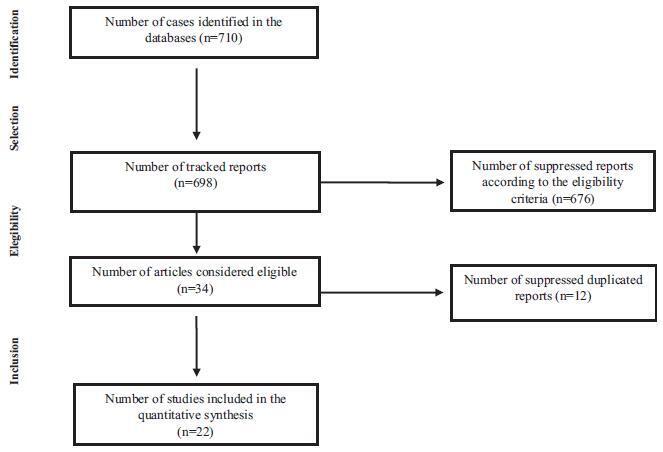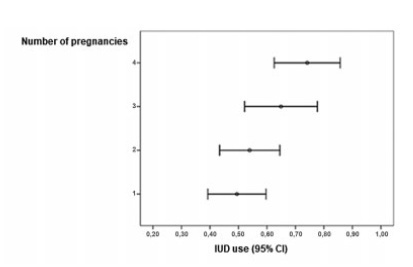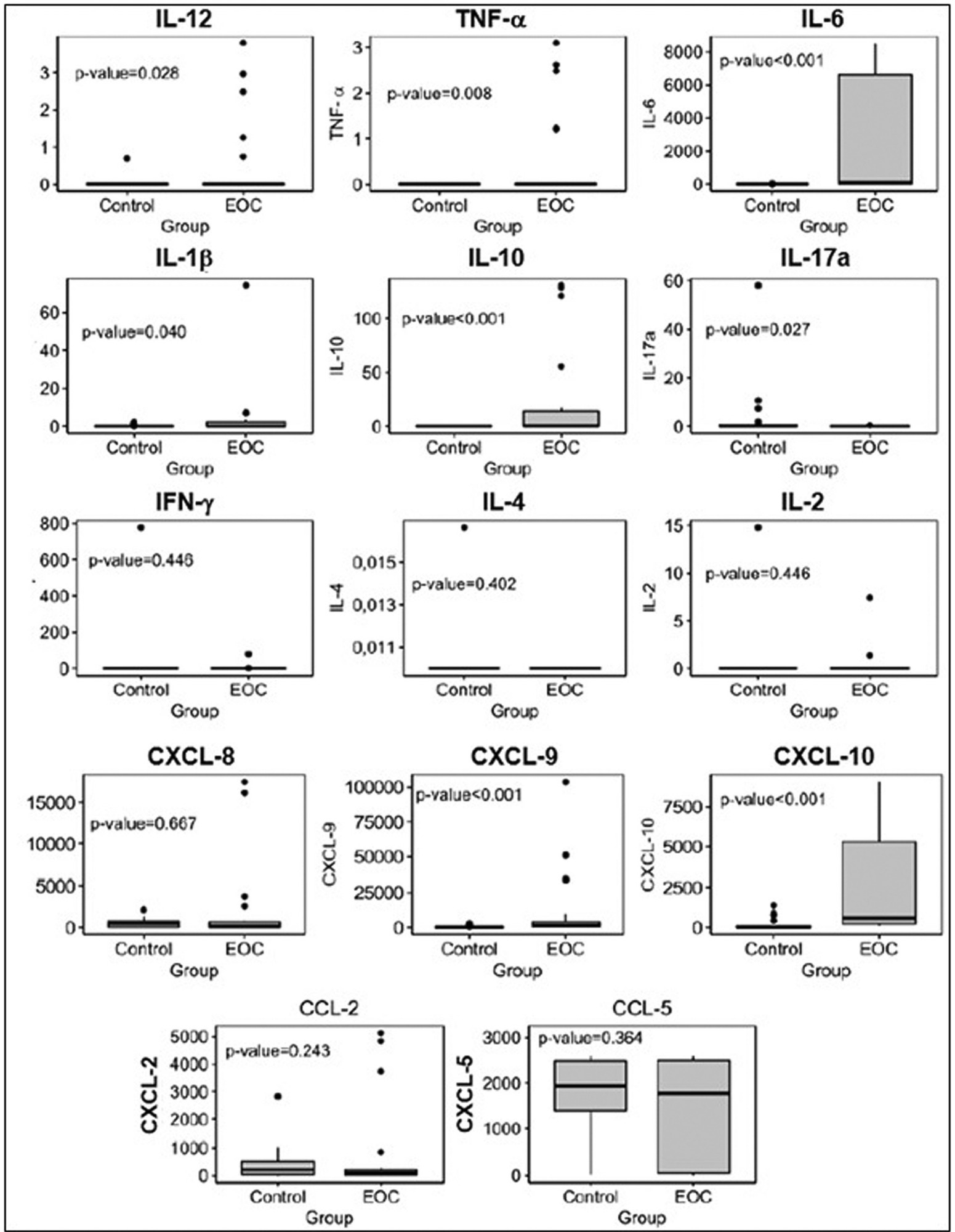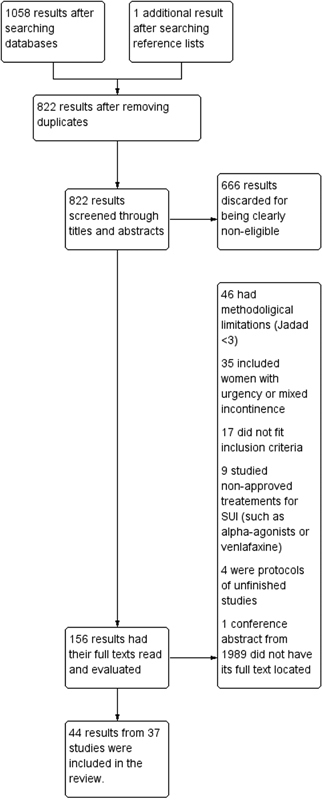-
Thesis Abstract08-04-2004
Amniotic infection in women held in public hospitals in Vitória-ES: prevalency, risc factors, diagnosis, histopathology and reproductive outcome
Revista Brasileira de Ginecologia e Obstetrícia. 2004;26(5):417-418
Abstract
Thesis AbstractAmniotic infection in women held in public hospitals in Vitória-ES: prevalency, risc factors, diagnosis, histopathology and reproductive outcome
Revista Brasileira de Ginecologia e Obstetrícia. 2004;26(5):417-418
-
Thesis Abstract08-04-2004
Evaluation of mammographic density and of scinti-mammographic uptake of sestamibi-99mTechnetium in postmenopausal women under hormonal treatment
Revista Brasileira de Ginecologia e Obstetrícia. 2004;26(5):417-417
Abstract
Thesis AbstractEvaluation of mammographic density and of scinti-mammographic uptake of sestamibi-99mTechnetium in postmenopausal women under hormonal treatment
Revista Brasileira de Ginecologia e Obstetrícia. 2004;26(5):417-417
-
Original Article08-04-2004
Nongynecologic surgery in patients with ovarian cancer
Revista Brasileira de Ginecologia e Obstetrícia. 2004;26(5):411-416
Abstract
Original ArticleNongynecologic surgery in patients with ovarian cancer
Revista Brasileira de Ginecologia e Obstetrícia. 2004;26(5):411-416
DOI 10.1590/S0100-72032004000500011
Views93See moreOBJECTIVE: to evaluate the incidence of non-gynecological surgical procedures used in the treatment of ovarian cancer, as well to describe their complications. METHODS: eighty-two patients with ages from 22 to 89 (mean = 54.1 ± 15.1 years), submitted to laparotomy for surgical treatment of ovarian cancer from February 1999 to October 2003 were retrospectively evaluated. This study included only patients with epithelial ovary carcinoma. The patients were divided into 2 groups, patients submitted exclusively to gynecological procedures and patients submitted to non-gynecological procedures. Statistical analysis was made with the Student’s t-test or the chi-square test. RESULTS: 5 patients (6.1%) were in stage (FIGO) I, 18 (21.9%) in stage II, 40 (48.8%) in stage III, and 19 (23.2%) in stage IV. Non-gynecological procedures were done in 35 cases (42.7%), including: 17 colostomies, 16 enterectomies, 8 peritonectomies, 7 colectomies, 5 partial diaphragm resections, 4 partial cystectomies, 4 splenectomies, 2 ileostomies, and 1 hepatectomy. All patients submitted to non-gynecological procedures were included in stages III and IV. This group of patients underwent longer-lasting surgeries (5.3 ± 1.4 versus 3.1 + 0,0 h; p < 0.001). There was no significant difference between these two groups regarding hemotransfusion requirement (42,2 versus 40%; p = 0.512) and hospitalization time (11.5 ± 7.2 versus 10 ± 9.9 days; p = 0.454). Patients submitted to non-gynecological surgeries developed higher rates of postoperative complications (37 versus 17.1%; p = 0.042), and two of them (2.4%) died. CONCLUSION: non-gynecological surgical procedures are frequently used in the treatment of patients with ovarian cancer. These procedures are associated with a longer-lasting surgery and higher rates of postoperative complications.
-
Original Article08-04-2004
Bromocriptine method associated with ovarian stimulation in poor responder patients
Revista Brasileira de Ginecologia e Obstetrícia. 2004;26(5):405-410
Abstract
Original ArticleBromocriptine method associated with ovarian stimulation in poor responder patients
Revista Brasileira de Ginecologia e Obstetrícia. 2004;26(5):405-410
DOI 10.1590/S0100-72032004000500010
Views113See moreOBJECTIVE: to assess the ovarian response of poor responsive patients, submitted to the bromocriptine method. PACIENTS AND METHODS: a prospective clinical trial for the in vitro fertilization (IVF) program was performed in 10 poor responsive patients. Endocrinologically normal ovulatory women under 38 years old, who had previously failed in IVF due to poor response to ovarian stimulation with the traditional protocol, were submitted to the bromocriptine method in 12 cycles. They were given bromocriptine, a dopaminergic agonist, in the preceding cycle in order to stop the prolactin production. When the medication was removed at the beginning of the stimulation cycle, an elevation of seric prolactin by a rebound phenomenon was found. This optimized its seric concentration, improving the quality of oocytes and embryos. Serum prolactin and estradiol concentrations, number of follicles, number and quality of oocytes and cleaved embryos, fertilization and pregnancy rates were analyzed. RESULTS: there was a reduction in the dose of gonadotropin administered and in the duration of ovarian stimulation and an improvement in follicular recruitment, oocyte retrieval, embryo morphology, fertilization, and ongoing pregnancy rates. Fertilization rate was 77.7%, pregnancy rate was 44.4% and live baby rate was 25%. CONCLUSION: this study suggests that the bromocriptine method enhanced follicular recruitment and embryonic development, resulting in increased fertilization and pregnancy rates when compared with the traditional protocol for poor responsive patients. Studies with a large number of patients are necessary to confirm these results.
-
Original Article08-04-2004
Color doppler flow analysis of the uterine arteries before and after DIU insertion
Revista Brasileira de Ginecologia e Obstetrícia. 2004;26(5):399-404
Abstract
Original ArticleColor doppler flow analysis of the uterine arteries before and after DIU insertion
Revista Brasileira de Ginecologia e Obstetrícia. 2004;26(5):399-404
DOI 10.1590/S0100-72032004000500009
Views88See moreOBJECTIVE: to observe if there is any alteration in the Dopplervelocimetry of the uterine arteries of nursing and not nursing women after the insertion of the copper T 380 intrauterine device (IUD). METHODS: prospective, analytical, self-paired clinical assay, with 100 patients in whom we evaluated the color doppler flow: resistance index (RI), pulsative index (PI) and systole/diastole (SD) ratio. Nursing and not nursing women were assessed before IUD insertion as well as 30 days (one cycle) and 90 days (three cycles) after the insertion. RESULTS: the values obtained in the uterine arteries before insertion were: RI: 0.9, PI: 2.4, and SD ratio: 10.0. The values 30 days after insertion were: RI: 0.9, PI: 2.5 and SD ratio: 10.7. After three cycles we found a value of 0.9 for RI, 2.5 for PI and 10.7 for SD ratio. The comparison of the results before and after the IUD insertion showed a p value of 0.51 for RI, of 0.37 for PI and of 0.51 for SD ratio, demonstrating that after the insertion of the IUD, there were no significant changes in Dopplervelocimetry. Also, there were not significant differences between nursing and not nursing women, concerning these parameters. CONCLUSIONS: the use of copper T 380 IUD has no effect on the Doppler indices of the uterine arteries of both nursing and not nursing women.
-
Original Article08-04-2004
Blood pressure and heart rate evaluated by ABPM in primigravid women during labor and early puerperium
Revista Brasileira de Ginecologia e Obstetrícia. 2004;26(5):391-398
Abstract
Original ArticleBlood pressure and heart rate evaluated by ABPM in primigravid women during labor and early puerperium
Revista Brasileira de Ginecologia e Obstetrícia. 2004;26(5):391-398
DOI 10.1590/S0100-72032004000500008
Views98See moreOBJECTIVE: to analyze the maternal blood pressure and heart rate variation of primigravid women during labor and early puerperium. METHODS: sixty primigravid women were included in the study, and submitted to ambulatory blood pressure monitoring (ABPM) with SpaceLabs 90207 monitor during labor and the first 12 h of puerperium. The records of blood pressure and heart rate were done every 15 min during labor and every 30 min during the first 12 h of puerperium. Three periods during labor (until cervix dilated 7 cm, cervix dilated between 8 cm and total dilatation, and delivery period) and two during puerperium (first and twelfth hours), were analyzed. First of all the results were analyzed without considering the kind of analgesia used and then the patients were divided into three groups, according to the anesthetic technique: local, lumbar extradural or subarachnoid. Results were analyzed by one-way analysis of variance (ANOVA) and paired Student’s t-test for blood pressure and heart rate in each group during labor and puerperium. The nonpaired Student’s t-test was used to compare different groups. A p value < 0.05 was regarded as statistically significant. RESULTS: when the results were analyzed without considering the analgesic procedure, the values of systolic blood pressure during labor were significantly higher than in early puerperium. During labor, systolic blood pressure values were higher in the periods of later cervical dilatation and delivery than during early cervical dilatation. In the 12th h of puerperium the systolic blood pressure was lower than in the first hour. Diastolic blood pressure did not change during labor and was higher than in early puerperium. Heart rate increased during labor and decreased during puerperium. The systolic and diastolic blood pressure and heart rate were the same both in local or lumbar extradural anesthesia groups; however, in the subarachnoid group the systolic and diastolic blood pressure did not change during labor. CONCLUSIONS: labor increased systolic blood pressure and heart rate. During labor, systolic and diastolic blood pressure were higher than in early puerperium. Both blood pressure and heart rate significantly fell from the first to the 12th hour of puerperium. The different anesthetic techniques did not affect blood pressure or heart rate, as compared with the primigravid group when the anesthetic technique was not taken into consideration.
-
Original Article08-04-2004
Prediction of fetal growth restriction by measurement of uterine height
Revista Brasileira de Ginecologia e Obstetrícia. 2004;26(5):383-389
Abstract
Original ArticlePrediction of fetal growth restriction by measurement of uterine height
Revista Brasileira de Ginecologia e Obstetrícia. 2004;26(5):383-389
DOI 10.1590/S0100-72032004000500007
Views121See moreOBJECTIVE: to evaluate the measurement of uterine height in order to predict fetal growth restriction (FGR), according to a local curve. METHODS: from July 2000 to February 2003, 238 high-risk pregnant women were submitted to uterine height measurements between the 20th and the 42nd week of gestation. The gestational age of all the women was well known, confirmed by early ultrasound. Fifty (21%) women gave birth to infants considered small for their gestational age. The measures were performed by a single observer, who took 1617 uterine height measurements, from the upper border of the symphysis pubis to the fundus uteri, using tape measurement. The diagnosis of FGR was confirmed after birth according to the Ramos’s curve. The women were divided into two groups according to their infant’s birth weight and the data were statistically analyzed by the Fisher’s exact test or Kruskal-Wallis’s test. The sensitivity (SE), specificity (SP), positive predictive value (PPV), and negative predictive value (NPV) were calculated. The test for two proportions with normal approximation was performed to analyze the continuous variables. RESULTS: one measurement below the 10th percentile, according to gestational age, resulted in SE = 78.0%, SP = 77.1%, PPV = 47.6%, and NPV = 88.8% for the identification of FGR. If one measurement was below the 5th percentile, the SE, SP, PPV, and NPV were 64.0, 89.9, 62.7 and 90.4%, respectively. CONCLUSIONS: one measurement below the 10th percentile for the gestational age, according to the local curve, proved to be a good predictor of FGR.
-
Original Article08-04-2004
Ultrasonographic markers for fetal congenital toxoplasmosis
Revista Brasileira de Ginecologia e Obstetrícia. 2004;26(5):377-382
Abstract
Original ArticleUltrasonographic markers for fetal congenital toxoplasmosis
Revista Brasileira de Ginecologia e Obstetrícia. 2004;26(5):377-382
DOI 10.1590/S0100-72032004000500006
Views124See moreOBJECTIVE: to describe ultrasonographic alterations in fetuses infected with Toxoplasma gondii, correlating them with neonatal prognosis. METHODS: between June 1997 and May 2003, 150 pregnant women with suspected toxiplasmosis were examined. Acute infection was confirmed in 72 (48%) of these pregnant women and congenital toxoplasmosis was diagnosed in 12 (16%) fetuses. Prenatal diagnosis was established by polymerase chain reaction in the amniotic fluid. All the patients received antiparasitic therapy. Ultrasound examination was performed every fortnight and all the infants were evaluated during their first year of life. RESULTS: ultrasonographic changes were observed in eight fetuses. All of them showed symmetric bilateral ventricular enlargement that was associated with periventricular calcifications in five cases. Other changes as hepatic calcification, hepatomegaly, polyhydramnium, and pericardial effusion were less frequent. Among these fetuses, four were stillborn and three showed sequelae (chorioretinitis and neuro-psychomotor retardation). The four fetuses that showed normal ultrasonography had a satisfactory development. CONCLUSION: There was a high incidence of ultrasonographic changes in fetuses with congenital toxoplasmosis, mainly brain damage. Other changes as hepatomegaly and pericardial effusion were less frequent and were related to a systemic infection. The prognosis of these fetuses seems to be correlated with the presence of these lesions mainly because they had high mortality ratio and among the survivors the incidence of sequelae was high. The non-symptomatic fetuses evolved in a favorable way without developing sequelae. These results highlight the value of ultrasonographic examination of these fetuses in order to establish a prognosis and allow the elaboration of a suitable post-natal procedure.
Search
Search in:
Tag Cloud
Pregnancy (252)Breast neoplasms (104)Pregnancy complications (104)Risk factors (103)Menopause (88)Ultrasonography (83)Cesarean section (78)Prenatal care (71)Endometriosis (70)Obesity (61)Infertility (57)Quality of life (55)prenatal diagnosis (51)Women's health (48)Maternal mortality (46)Postpartum period (46)Pregnant women (45)Breast (44)Prevalence (43)Uterine cervical neoplasms (43)









